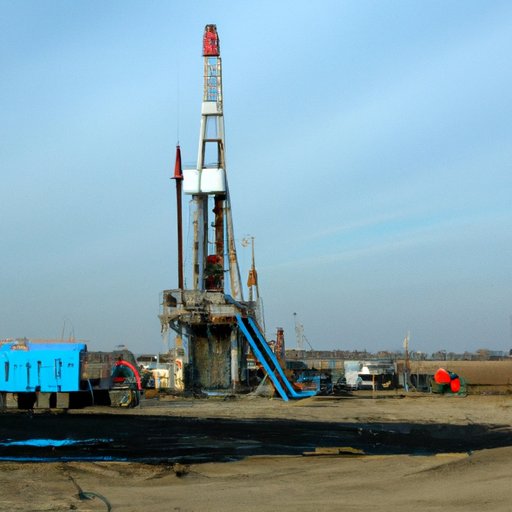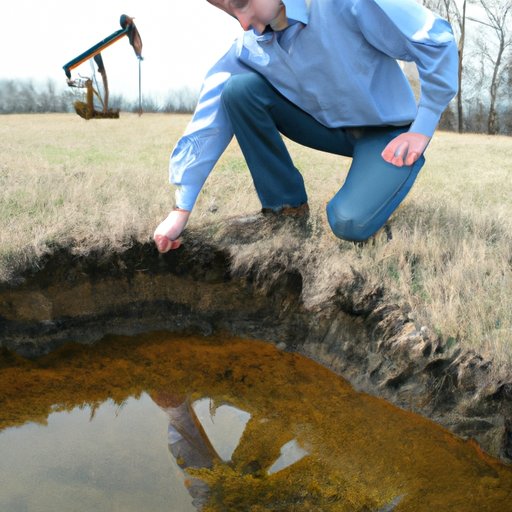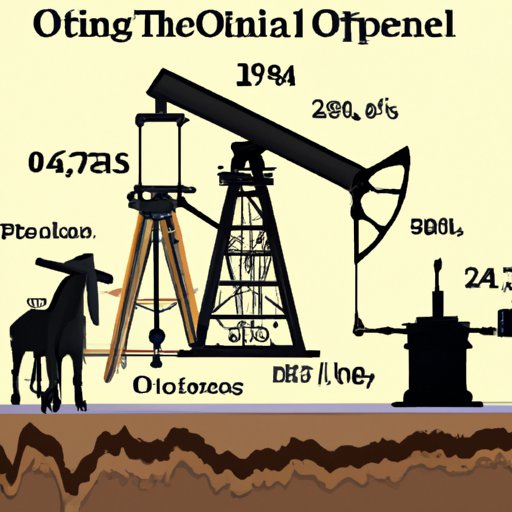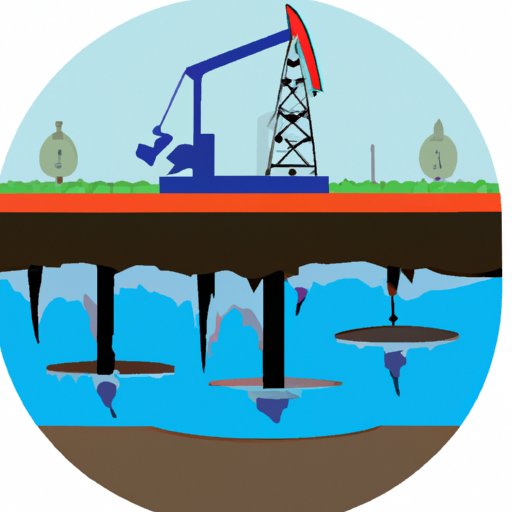Introduction
Oil drilling is the process of extracting oil from underground reservoirs. It is an essential part of the oil and gas industry that has allowed us to access the energy resources we need to power our lives. But what exactly is involved in the process of oil drilling, and how does it work? This article will explore these questions in more detail, examining the basics of oil drilling, the science behind it, the technology used, and its environmental impacts.
Explaining the Basics of Oil Drilling: A Step-by-Step Guide
The process of oil drilling begins with the selection of a drilling site. This is done by studying geological surveys and seismic surveys to identify potential oil reservoirs. Once a site has been chosen, the next step is to set up the drilling rig. This involves assembling the necessary equipment and technology for drilling, such as the derrick, drill pipe, casing, and other tools.
Once the rig is in place, the actual drilling process can begin. The drilling bit is lowered into the ground and rotates at high speed, breaking up the rock and allowing the oil to be extracted. The oil is then pumped to the surface through the well bore. In some cases, hydraulic fracturing or “fracking” may be used to increase the flow of oil. This involves injecting a mixture of water, sand, and chemicals into the rock formations to create fractures, which allows more oil to be extracted.
There are two main types of wells used in oil drilling: vertical wells and horizontal wells. Vertical wells are drilled straight down into the earth, while horizontal wells are drilled at an angle. Horizontal wells are more efficient and allow for greater access to the oil reserves.
The Science Behind Oil Drilling: How Does it Work?
Before any drilling can take place, geologists must first study the area to determine where the oil reserves are located. They use a variety of techniques, such as seismic surveys and gravity surveys, to map out the subsurface geology and locate potential oil reserves. Once the location is determined, the drilling process can begin.
The next step is to establish a well bore, or hole, which is created by rotating a drill bit at high speed. The drill bit breaks up the rock and removes debris, allowing the oil to be extracted. Specialized tools and equipment are used to ensure that the well bore is stable and secure. In some cases, hydraulic fracturing may be used to increase the flow of oil.
A Look at the Technology Used in Oil Drilling
Oil drilling requires specialized technology and equipment to ensure that the process is safe and efficient. The most important pieces of equipment are the drill bits, which are designed to break up the rock and remove debris. Other pieces of equipment used in oil drilling include downhole logging tools, pressure gauges, and pumps.
In addition to the equipment, there are also a variety of technologies that are used in oil drilling. These include drilling fluid systems, directional drilling systems, and computerized data acquisition systems. All of these technologies help to make the process of oil drilling more efficient and effective.

An Overview of the Process of Oil Drilling
The process of oil drilling involves several steps. First, geologists use seismic surveys and geological surveys to locate potential oil reservoirs. Once a site has been selected, the drilling rig is set up and the drilling process begins. The drill bit breaks up the rock and creates a well bore, which is then used to extract the oil. In some cases, hydraulic fracturing may be used to increase the flow of oil.
Once the oil has been extracted, it is transported to a refinery where it is processed and refined into various products. These products can then be used for a variety of purposes, such as fuel for cars, trucks, boats, and planes.

Examining the Environmental Impact of Oil Drilling
Oil drilling can have a significant impact on the environment. Pollution from drilling operations can contaminate the air, water, and soil, leading to health risks for humans and wildlife. In addition, oil spills can occur during the drilling process, resulting in further environmental damage.
Oil drilling can also affect wildlife and ecosystems. For example, it can disrupt habitats and cause noise pollution, which can be harmful to animals. In addition, it can also lead to the destruction of natural resources, such as forests and wetlands.
The Pros and Cons of Oil Drilling
As with any endeavor, oil drilling has both advantages and disadvantages. On the one hand, it provides economic benefits by providing jobs and generating revenue for local communities. In addition, it helps to meet the world’s growing demand for energy resources. On the other hand, it can have significant social and political implications, as well as environmental impacts.

The History of Oil Drilling and its Evolution Over Time
Oil drilling has been around for centuries, and its evolution over time has been remarkable. Early pioneers of oil drilling developed basic techniques and technologies, such as cable tool drilling, which were used to access oil reserves. As time went on, more advanced technologies were developed, such as rotary drilling and directional drilling, which made the process more efficient and effective.
Conclusion
Oil drilling is a complex process that has evolved over time. It involves the use of specialized equipment and technologies, and it can have significant environmental impacts. While it offers economic benefits, it also has social and political implications. Understanding the basics of oil drilling can help us to make informed decisions about how best to use this resource.
(Note: Is this article not meeting your expectations? Do you have knowledge or insights to share? Unlock new opportunities and expand your reach by joining our authors team. Click Registration to join us and share your expertise with our readers.)
